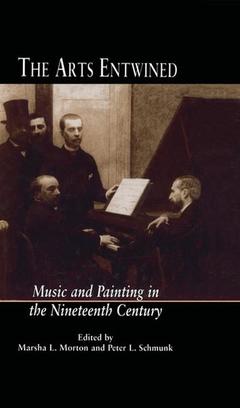Description
The Arts Entwined
Music and Painting in the Nineteenth Century
Critical and Cultural Musicology Series
Authors: Morton Marsha, Schmunk Peter L.
Coordinator: Morton Marsha L.
Language: English
Keywords
symphonic; poem; fingal's; cave; tone; painting; camille; pissarro; wagner's; music; Gogh; Vincent Van Gogh; Gauguin; Paul Gauguin; Young Man; Johanna Sebus; Danse Macabre; Chopin; Program Music; Le Rouet; Hebrides Overture; Tone Painting; Fingal's Cave; Um Mitternacht; Symphonic Poem; La Crau; Liszt's Symphonic Poems; Van Gogh; Adolphe Jullien; Hugo's Poem; Mendelssohn's Overture; Charles Gleyre; Wassily Kandinsky; Ready Applicability; Artist's Arrival
86.68 €
In Print (Delivery period: 14 days).
Add to cart· 12.9x19.8 cm · Paperback
Description
/li>Contents
/li>Biography
/li>
This collection of essays by musicologists and art historians explores the reciprocal influences between music and painting during the nineteenth century, a critical period of gestation when instrumental music was identified as the paradigmatic expressive art and theoretically aligned with painting in the formulation utpictura musica (as with music, so with painting). Under music's influence, painting approached the threshold of abstraction; concurrently many composers cultivated pictorial effects in their music. Individual essays address such themes as visualization in music, the literary vs. pictorial basis of the symphonic poem, musical pictorialism in painting and lithography, and the influence of Wagner on the visual arts. In these and other ways, both composers and painters actively participated in interarts discourses in seeking to redefine the very identity and aims of their art. Also includes 17 musical examples.




